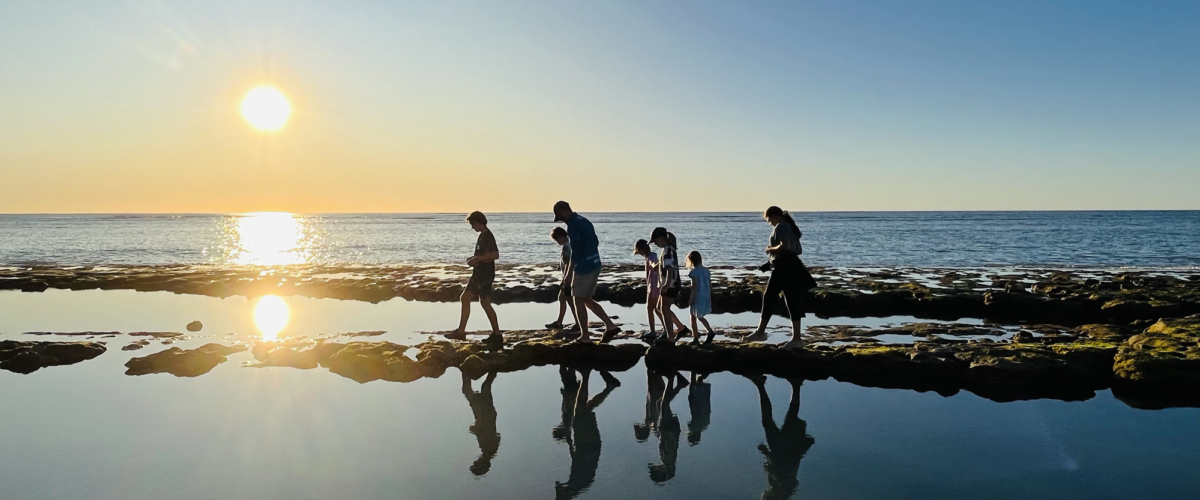
Discover the amazing underwater world of the Mackerel Islands. Located just north of the world heritage listed Ningaloo Reef and the Exmouth Gulf, the islands offer a chance to explore new dive sites teeming with a high diversity of corals and marine life, which have often never been in contact with a human being.
Most sites are between 3m and 18m and require a moderate level of experience.
Dive the Mackerel Islands, Western Australia
Dive sites waiting for you to discover are Rankin Road, Sultan’s Reef, Black Flag, Trap Reef, Brewis Reef and Sheltered Coral Gardens. All are idyllic for underwater photography and to see nature at its most beautiful, audacious and challenging.
Typical sealife to swim amongst includes whales, dolphins, gropers, reef sharks, tawny nurse sharks, stingrays, wobbegongs, turtles, olive green sea snakes, thick trevally schools, snapper, pearl perch, fusiliers, batfish and silver drummer.
Facilities
- Guests must bring their own dive equipment and boat, or hire a plaka boat from the island activity centre (RST required)
- Dive equipment can be hired from Pilbara Dive & Tours in Karratha with pre-arrangement / advance notice
- Snorkel set hire (small selection) available from the island activity centre, or bring your own special snorkel equipment
- Exciting range of dive sites for you to explore
Media
Read an article from the DiVELOG Magazine, WA’s New Diving Hot Spot, written back in 2010 by Nigel Marsh. Whilst some of the information is no longer applicable (MIDive is not currently in operation, and it’s much easier to get to us now!) it provides a good recount of a dive expert’s experience in our waters. Additional images are available to view on the Nigel Marsh Photography site.
Watch a short video clip from Season 5, Episode 4 of Destination WA, Diving the Mackerel Islands.
Dive Sites
Rankin Road
For those of you who like swimming among BIG schools of fish, Rankin Road is the location for you. Five kilometres from Thevenard Island and 18 metres down, it’s not unusual to get 40 rankin cod following you around while you explore the length of a sub-sea wall. Sea snakes, reef sharks, coral trout and many pelagic species school at this site making it one of the fishiest places to be in the Mackerel Islands. Photographic heaven.
Sultan’s Reef
Closer to Thevenard Island, Sultan’s Reef features a coral lined wall 14m deep rising to 6 metres (tabletop), making for an easy safety stop at the end of the dive. The wall is visited by pelagic fish and permanent reef species. It attracts larger species with mackerel and barracuda schooling the edge. The top of the site contains colonies of anemones and clown fish, colourful soft corals, several nudibranch species and small ‘benthic’ treasures. This site has a lot of potential and being a lengthy wall is yet to be fully explored!
Black Flag
With some of the most brilliantly incandescent corals in caves and ledges sitting 17 metres down, the Black Flag site just has to be seen. Featuring large gorgonians and black coral trees in only ten meters of water, it has resident olive sea snakes, Queensland groper the size of a small car, and sleeping leopard and nurse sharks (which you’ll most likely see on any dive amongst the islands). Black Flag and nearby Paroo Shoals are both favourites for an incredible diversity of nudibranchs, so if you like to look small, these are the sites to see.
Trap Reef
Consisting of many clusters, the Trap Reef sites lie between three and 13 metres deep. Crevices, overhangs and small caves are scattered throughout. Dense clouds of pomfrets and Spanish flag are abundant, while larger coral trout and Chinamen fish lurk in wait. Turtles, reef sharks and mangrove jack have also been frequent visitors. Soft and hard corals in cobalt blue, pink, yellow and vermillion impart kaleidoscopic hues among this beautiful seascape.
Shallow Protected Coral Gardens
Large coral bombies, cabbage leaf and green tree coral outcrops are common to sites located close to the islands. Many of these sites are calm, clear, protected from wind and make for excellent secondary dive locations. Shallow depths (mostly less than 6 metres) give long bottom times, giving you the opportunity to observe more subtle marine interactions. Schooling behaviours, the ‘hide and show’ of irrepressible damsels and chromis make for very calm and relaxing dives.


